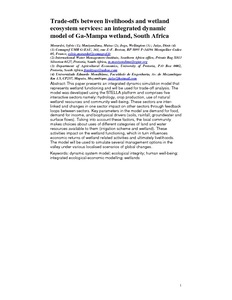impacts of global change in the humid tropics: selected rainfall-runoff issues linked with tropical forest-land management
Within the framework of IWRM, a major concern in the humid tropics is the effects of ‘global warming' on the storm rainfall-runoff hydrology of both forests and converted forest lands. Further how such effects need to be incorporated within adaptive, forest-water-land management. But since the mid- 20th century, dramatic changes in land- use (LU) and land cover (LC) have also occurred which have led to rapid rates of deforestation and an expansion of land--forest degradation.


